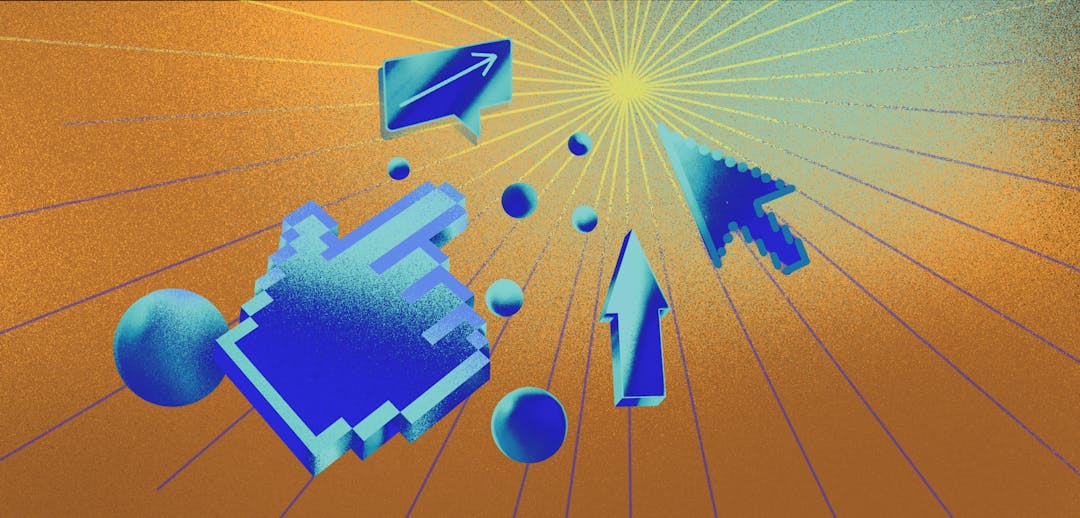Customer success is all about empowering customers and users to succeed when using your products. Explore how to construct a customer success strategy with clearly-defined personas, customer journeys, and success metrics.
The subscription universe is built on relationships. When your customers are happy, they stick around. And when they stick around, you make money—2.6 times as much money, according to this Annex Cloud report. That’s what makes a customer success strategy so important. Thinking proactively about how to build products that help customers achieve their goals is the best tool you have for building lasting relationships.
Building a solid customer success strategy is easy, too, as long as you focus on how different types of customers move through their journey, from discovery to purchase. Guiding people effectively through that journey helps them see the value your service provides at each step of the way. It compounds, fostering stronger relationships that retain customers long-term.
Here, we’ll talk all things customer success—what it is, why it matters, and how to build a winning strategy for your company. Let’s dive in.

What is customer success?
Customer success (CS) is the process behind helping customers achieve their intended goals. It’s a methodology for thinking about product, pricing, and experience that’s customer-focused and goal-oriented. A customer success strategy is also one of the most important tools that SaaS and subscriptions have for boosting retention rates.
What’s the difference between customer service/support and customer success?
Customer service and support are all about solving problems for customers retroactively. When a customer encounters an issue with a product or service, they’ll reach out to a call center customer service/support team to resolve them. It’s also an avenue for expressing their positive or negative feedback about the product and customer experience.
-131e3b.jpg?auto=format%2Ccompress&fit=max&w=1200)
Customer support vs. customer success via HubSpot.
Customer success, on the other hand, is proactive. It’s a strategy dedicated to guiding customers toward their goals and providing a solid experience along the way. This process happens long before a customer ever has the chance to run into an issue with your product or service.
The benefits of a clearly defined customer success strategy
Customer success is core to successful subscription growth. It relieves pressure on your acquisition team by optimizing the customer journey, builds retention efforts directly into the product, and makes it easy to showcase value at every touchpoint along the way. A winning customer success strategy ensures that your product or service is optimized to provide the best possible experience for every new customer.
Get it right and your customer success strategy can decrease customer acquisition costs (CAC), increase the lifetime value (LTV), and make a direct impact on your revenue potential.
Higher customer LTV
Helping customers achieve their goals makes everyone happy, which leads to higher retention rates and an easier path to expansion revenue. This increased LTV is tied directly to more long-term and predictable revenue.
Lower churn rates
When you understand customer onboarding and evaluate its impact on an ongoing basis, identifying potential pain points is much easier. Especially when 54% of US consumers say that customer experience at most companies needs improvement. That helps you decrease the potential for voluntary churn due to poor product experience or lack of success.
-81e3b.jpg?auto=format%2Ccompress&fit=max&w=1200)
Churn prevention strategies via ProfitWell
Easier customer acquisition
When they understand how simple it is to achieve their goals using your product, customers will be easier to convert. This cuts down on the length of your acquisition pipeline and provides your sales team with case studies and positive feedback to share with leads.
Less pressure on customer service
Creating a positive customer experience from day one cuts down on unnecessary calls to your customer service team later on. This frees them up to provide more comprehensive support to the customers who are calling in for help with optimizing your product for their personal goals.
Customer success is a mindset. It should be threaded throughout your product, support, development, and pricing teams to create a culture of employees who truly care about your customers.
7 steps for creating your customer success strategy
Customer success needs to be a company-wide priority for SaaS and subscription companies. The customer relationship is at the core of your recurring revenue, and everything you do to cement those relationships has a net positive impact on your bottom line. Building your customer success strategy is all about focusing on those relationships.
1. Identify target personas
You won’t know how to provide the best possible experience if you don’t understand your target customer. Buyer personas help you qualify the best-fit customers for your product and figure out how to attract them to your service. It’s impossible to make someone successful if you don’t understand their goals.
2. Talk to current customers
Your current customers are some of the most valuable assets you have. They can provide you with real-time customer feedback on your product, its value, and how it helps them be successful. Talking to current customers is also a great way to find social proof to share with prospects and leads to help them convert.
Try using chat pop-ups, automated email campaigns, and proactive outreach to survey your current customer base about their needs.
3. Map out multiple customer journeys
Each target persona should have its own customer journey. Once you understand who your customers are, who you want to attract, and how to convert them, it’s time to map out the journey that gets them there. Build this journey based on customer feedback as well as the goals of each customer.
Start small. If you understand the basic journey a customer follows from discovering your product to purchasing it to finally becoming a loyal user, that will help you build a better experience as a whole.
4. Optimize your onboarding journey
Getting used to a new product or service is never easy. Make sure your onboarding journey is optimized to provide the most value possible at each customer touchpoint. Use the customer surveys and conversations you’ve had to figure out where to focus. The easier it is to get acclimated to a new tool, the better off customers will be in the long term.
5. Define what success looks like for each persona
What actions does a new customer need to take to achieve their goals using your service? Make sure you define exactly what outcomes are beneficial for each target persona, and then incorporate them into your customer success strategy. Learn more about building holistic personas in this post about customer research.
6. Pick metrics that reflect those outcomes
How do you quantify a customer’s success? It’s important to nail down the metrics you need to use to map out exactly how much customer success impacts your bottom line. Whether it’s retention and churn rates, new MRR, or LTV—make sure you can analyze the success of your strategy effectively.
If you’re not sure which metrics make the most sense, track how each changes as you implement your customer success strategy. Sometimes making an impact on your onboarding series will help you increase LTV, sometimes it will cut down on churn rates.
7. Use customer success software to augment your strategy
There are a number of different tools you can use to facilitate customer success. Here are a few to help you get started with your search:
- Intercom: Their platform provides live customer chat, so you can connect with customers as they use your product/service.
- Zendesk: An all-in-one suite for customer management, customer service, and sales.
- Gainsight: This tool helps you track success metrics (like churn rate and LTV) to see whether your customer success strategy is working
These are just a few platforms that can help you measure the impact of your customer strategy. Find the tools that provide you with the most value and meet your unique business’s needs.
Customer success tips and best practices
We’ve put together our four top tips for nailing customer success at your company. As you’re building out your own strategy, think about how you can apply these to your goals and the goals of your customer base:
Quickly resolve common customer pain points.
Any points of friction in your product onboarding are an opportunity for churn. Make sure you’re identifying and resolving common pain points as quickly as possible in your retention analysis, before they have the chance to damage your churn rate.
Make helpful resources readily available.
Be sure that your knowledge base and FAQ articles are up to date and value-driven. Providing your customers with helpful resources makes them better users independently and can lead to higher retention.
Proactively reach out to customers in trouble.
If you track how customers move through your onboarding series, it’s easy to reach out with a helpful call, chat, or email when someone’s in trouble. That outreach is a great way to make an emotional connection with a customer and solve their problem before it leads to churn.
Overcommunicate upcoming changes.
Everything changes—especially in SaaS. But customers don’t usually like it when it does, especially if you’re changing something that’s vital to the success of their business. Make sure any planned updates, outages, and pricing changes are communicated often and well before they happen. Sudden changes are always a poor customer experience.
Find ways to help customers succeed
The customer relationship is at the core of every SaaS and subscription company. When revenue is tied directly to recurring monthly payments, any negative experiences that lead to churn have a direct impact on your bottom line. Make sure you’re thinking about a customer success strategy that helps your customers.



